Follow these easy steps to propagate forsythia bushes so your yard can be a beautiful sea of yellow flowers at the beginning of every spring!

My first shrub purchase ever was a tiny little forsythia plant that I bought myself early one spring when we lived in our old house. That thing went on to grow like crazy and gave me such joy when it burst to life with all those cheerful yellow flowers early every spring. I’ve been hooked ever since. We created a little flower garden in our backyard a few years ago and I included two big forsythia bushes back there. They’ve grown to be huge and I just love them. But I want more! 🙂 I decided I would see if I could propagate forsythia to make a few more of them to place in some other areas around the property as well. I love the idea of having all of those happy golden flowers surrounding our house every spring!
How to Propagate Forsythia: The Basics
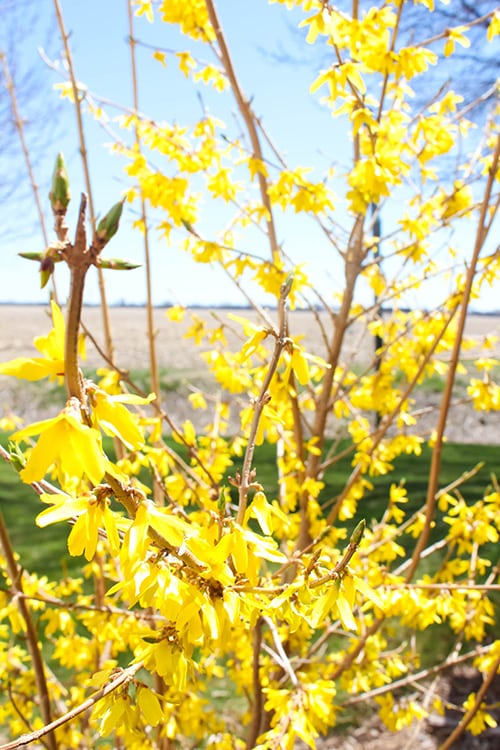
Forsythia are ideal plants for propagating because they’re such hardy, fast growers. You can start off with really teeny tiny plants and end up with something quite sizeable within a year or two.
To propagate forsythia successfully you’ll need:
- A long planter box, several smaller pots, or a planter with several small sections like a seed-starting planter
- Potting mix (look for something that says it can be used specifically for cuttings)
- Clean, sharp pruning shears (learn how to clean them here and how to sharpen them here!)
- Rooting hormone powder
Aim to do your propagating sometime between May and early July. You want to do it after the flowers have fallen off and the leaves have come out, but still early enough in the season that they will have lots of time to grow strong roots before winter. Right now is just about the perfect time. 🙂
How to Propagate Forsythia: Step-By-Step
First, prepare your potting mix by placing it in whatever containers you’ll be using. You want it to be evenly moist, but not soaking wet before you begin. If you’re using fresh potting mix right out of the bag, it’s probably perfect already.
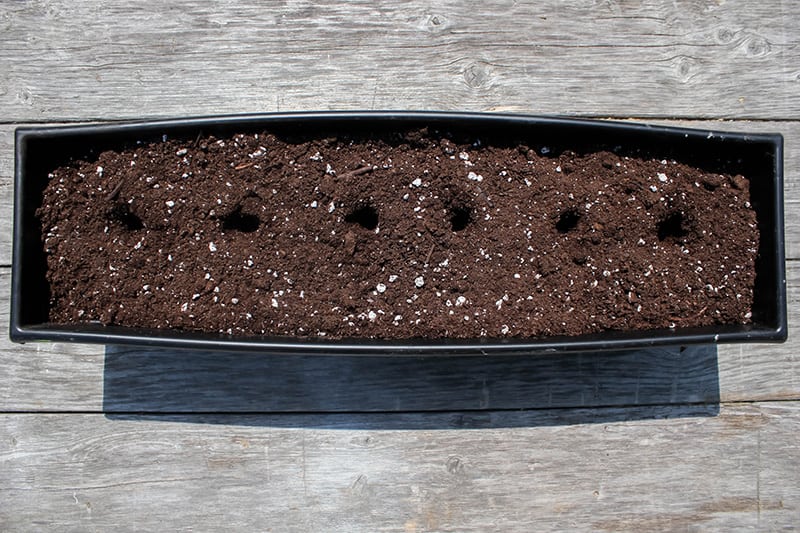
Make your cuttings by clipping pieces of new growth that are four to six inches in length. You want to look for the branches that are brand new this year that are still bright green. If the branches have turned a brown, woody color then they’re from last year and you don’t want them for this.
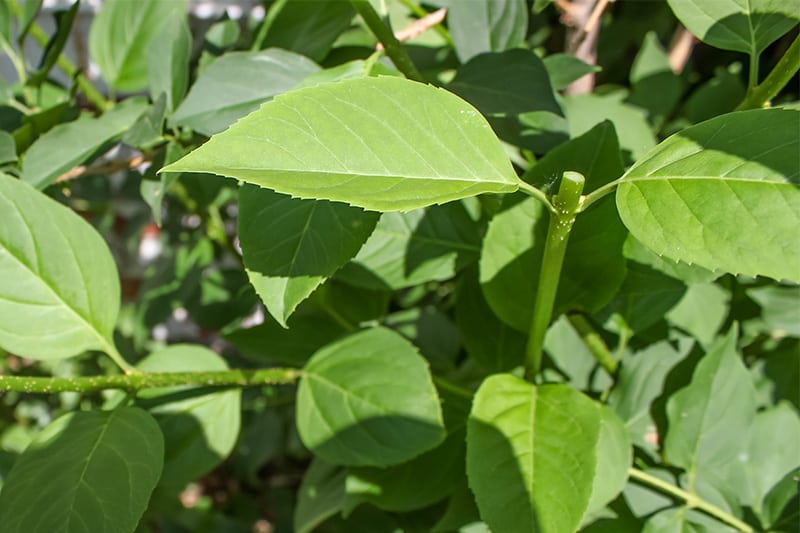
Cut about twice as many branches as the number of plants you would like to end up with because you may not be 100% successful with all of your cuttings. It’s better to have too many plants than not enough because you’ll need to wait a full year to be able to do this again.
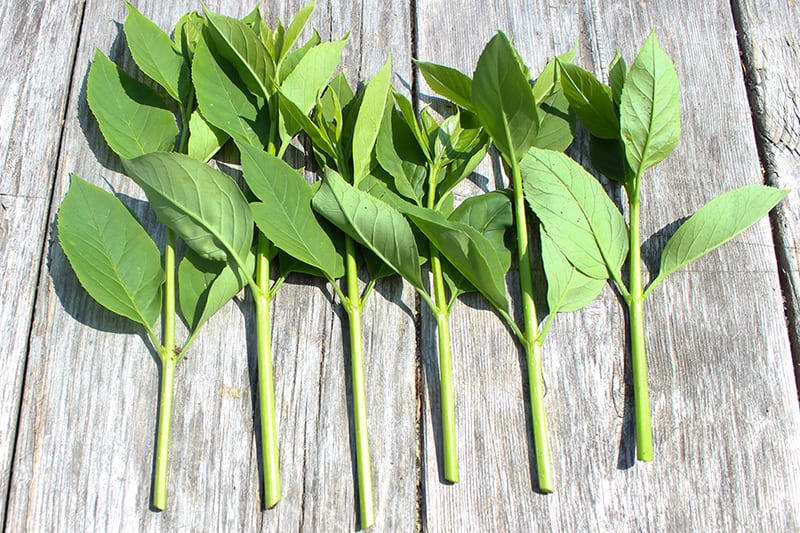
Remove any leaves from the bottom 2 inches of your cuttings and dip them in a bowl of warm water. Next, carefully dip them in rooting hormone, making sure to coat the entire bottom 2 inches in powder.
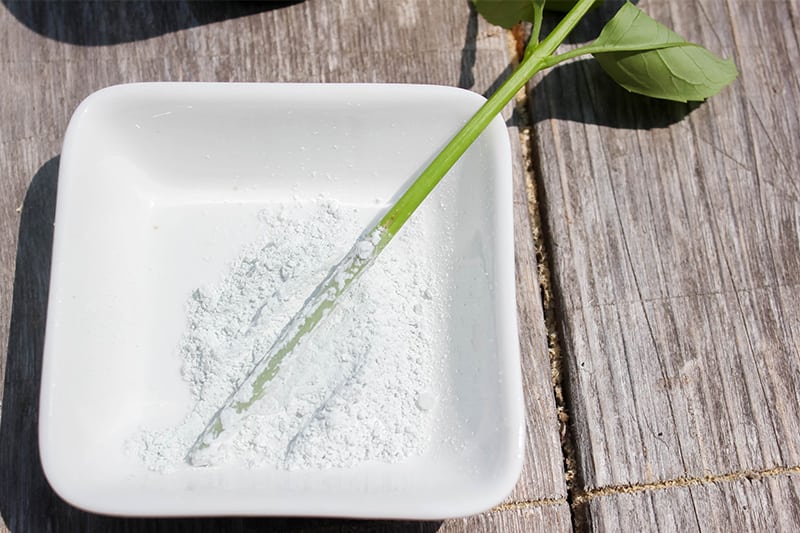
Stick them into the potting mix and firm the soil a bit around them to make them stay.
Repeat as needed!
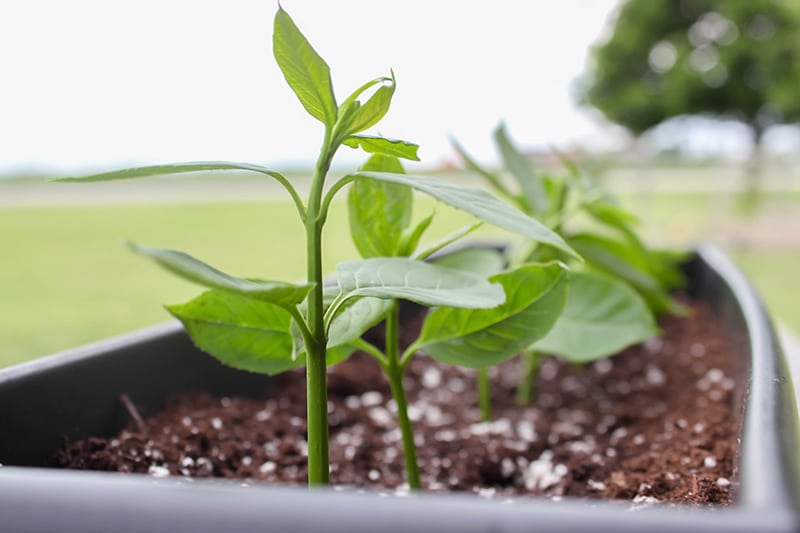
You may notice that some of your cuttings have gotten pretty droopy during these short few minutes since they’ve been clipped. Don’t worry too much about this. Mine were obviously quite droopy but they perked right back up again within a few hours.
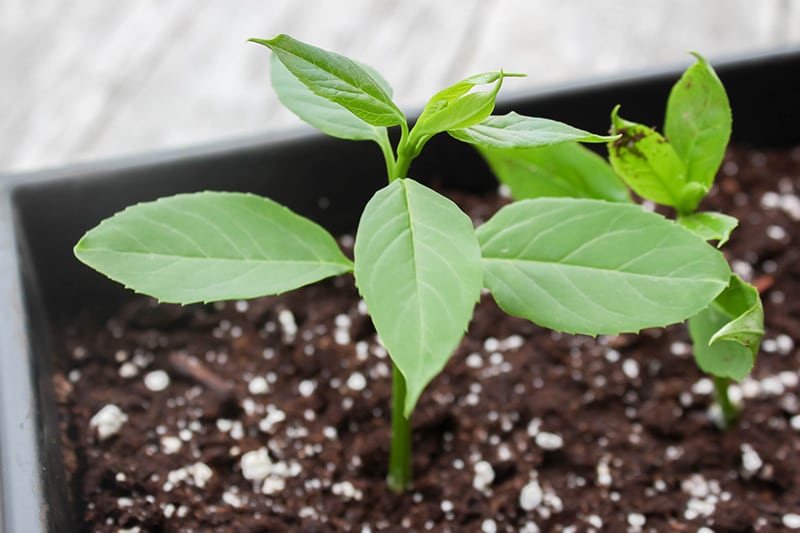
Water your cuttings lightly but not too much. You want to keep things evenly moist at all times for these first few days, but not too wet.
How to Propagate Forsythia: What to do Next
Place a plastic bag over your cutting to keep the humidity high and keep the warmth in and place your cuttings in a sunny spot out of direct sunlight. Water lightly every second day or so. After a few days, you can cut a hole in the bag for air circulation or you can just leave one side open like I do.
After about 6-8 weeks, your cuttings should begin to root and you should see some new growth starting to form as well. You can remove your plastic bag “greenhouse” at this point. Keep your plants indoors for a week or two more, then move them outdoors to an area out of direct sunlight to start getting them used to the climate outdoors.
By the fall, your plants should be growing pretty nicely and they’ll be ready to plant in the ground!
If you’ve never tried propagating plants this way before, you should definitely try to propagate forsythia first before you try any other plants. Forsythia are such happy little thrivers and it’s been so fun to watch how well my plants are doing already after only a few weeks! Definitely a great confidence booster if you’re a bit of a nervous gardener!
Have you ever tried to propagate forsythia? What other common plants would you suggest for propagating using this method?
MORE IDEAS LIKE THIS
- How to Revive a Sad Looking Hydrangea
- Growing Your First Grape Vines
- How to Use Salt to Kill Weeds
- Using Baskets as Planters
- How to Sharpen Pruning Shears
- The Creek Line House Gardening Project Archives
This post contains affiliate links.
Courtenay Hartford is the author of creeklinehouse.com, a blog based on her adventures renovating a 120-year-old farmhouse in rural Ontario, Canada. On her blog, Courtenay shares interior design tips based on her own farmhouse and her work as founder and stylist of the interior photography firm Art & Spaces. She also writes about her farmhouse garden, plant-based recipes, family travel, and homekeeping best practices. Courtenay is the author of the book The Cleaning Ninja and has been featured in numerous magazines including Country Sampler Farmhouse Style, Better Homes and Gardens, Parents Magazine, Real Simple, and Our Homes.
